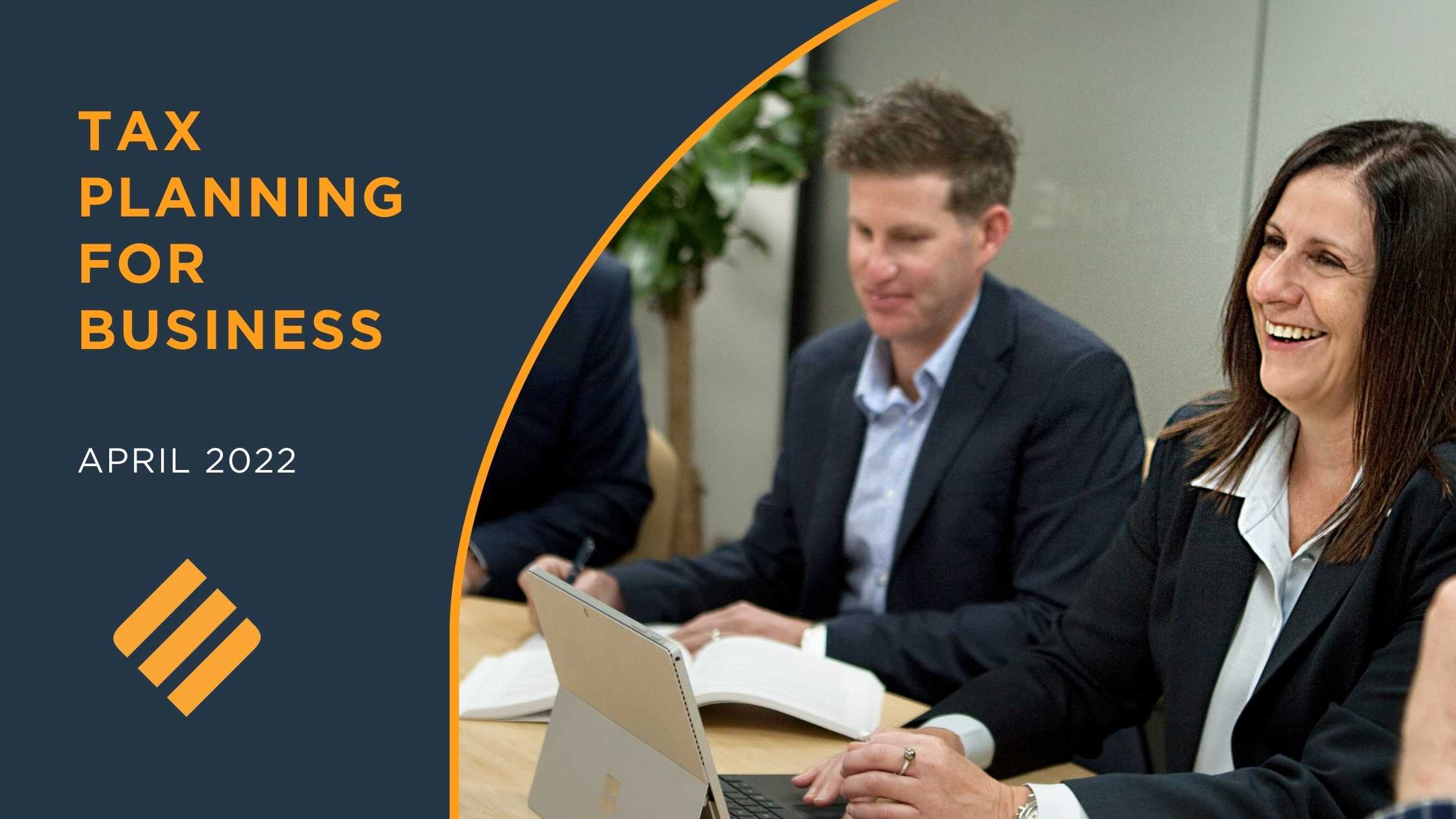4 Tax Planning Strategies for Business in 2022
With the end of the financial year looming, business owners need to start thinking about their 2022 tax planning.
It’s important to make sure you are taking advantage of all the tax deductions and concessions available to you in order to legitimately minimise your tax position. In this blog, we’ll outline some of the key tax planning strategies that should be considered in order to maximise your tax deductibility and in-turn minimise your tax liability. So read on to find out more!
One of the most important tax planning strategies for businesses is to ensure that you are claiming all of the deductions and concessions your business is entitled to.
There are a number of tax deductions and concessions available, so it’s important to do your research, understand the pros and cons and make sure your business is taking full advantage.
Some of the key deductions and concessions include:
Temporary Full Expensing
Temporary full expensing supports businesses and encourages investment, as eligible businesses can claim an immediate deduction for the business portion of the cost of an asset in the year it is first used or installed ready for use for a taxable purpose.
You may be eligible for temporary full expensing if you are one of the following:
- a business with an aggregated turnover of less than $5 billion
- a corporate tax entity that meets the alternative income test.
For the 2021–22 and 2022-23 income years, an eligible entity can claim in its tax return a deduction for the business portion of the cost of:
- eligible new assets first held, first used or installed ready for use for a taxable purpose between 7.30pm AEDT on 6 October 2020 and 30 June 2023
- eligible second-hand assets where both
- the asset was first held, first used or installed ready for use for a taxable purpose between 7.30pm AEDT on 6 October 2020 and 30 June 2023
- the eligible entity’s aggregated turnover is less than $50 million
- improvements incurred between 7.30pm AEDT on 6 October 2020 and 30 June 2023 to
- eligible assets
- existing assets that would be eligible assets except that they are held before 7.30pm AEDT on 6 October 2020
- eligible assets of small business entities using the simplified depreciation rules and the balance of their small business pool.
You can make a choice to opt out of temporary full expensing for an income year on an asset-by-asset basis if you are not using the simplified depreciation rules.
Small Business Capital gains tax concessions
These concessions allow you to reduce, disregard or defer some or all of a capital gain from an asset used in a small business.
There are 4 small business CGT concessions available:
- Small business 15-year exemption
- Small business 50% active asset reduction
- Small business retirement exemption
- Small business rollover
There are basic eligibility conditions common to all 4 concessions. You can find out more about these CGT concessions here including eligibility, https://www.ato.gov.au/business/small-business-entity-concessions/concessions/cgt-concessions/, or talk to your Johnsons MME adviser.
Tax Deferral
Another tax planning strategy that businesses can consider is income deferral. This involves postponing certain income or gains until a later date. This can be an effective way to minimise your tax liability in the short term, however you need to understand that this is more a timing issue of sorts and can potentially roll forward any tax payable to the next financial year.
If you’re thinking about tax deferral, we recommend talking to us about your specific circumstances. We can help you understand the implications of this strategy and whether it’s right for your business.
The Small Business Income Tax Offset
This provides small businesses with a tax offset of up to $1,000 per year. The offset is worked out on the proportion of tax payable on your business income.
To be eligible, you must:
- be carrying on a small business as a sole trader, or have a share of net small business income from a partnership or trust
- have an aggregated turnover of less than $5 million for the 2016–17 income year onwards
Seek advice
The above four strategies are just a few examples of how you can minimise your tax liability for the 2021/22 financial year.
This information does not take into account your overall circumstances or needs.
If you have any questions about tax planning for your business, we encourage you to get in touch with us. We can provide tailored advice to help you minimise your tax liability and maximise your financial position.

Chad Rigoni
Manager, Business Services





